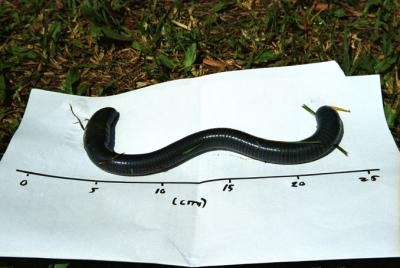
Working together and managing farms in ways that protect GGE habitat will help ensure that GGEs continue to survive and thrive. This is imperative for threatened species such as the Giant Gippsland Earthworm, where the farmers of South and West Gippsland are the custodians of the majority of its habitat. Įmma Sherlock, senior curator of free-living worms at the Natural History Museum and chair of the Earthworm Society of Britain, said that Dave's size is astounding.Farmers As Custodians It’s not just national parks and nature reserves that are important for protecting our threatened plants and animals farmland also plays a role in biodiversity conservation. In fact, Dave nearly doubled the previous heavyweight record holder: a worm found in Scotland that weighed just 0.5 ounces (15 grams). The worm measures nearly 16 inches (40 centimeters) long and weighs almost 1 ounce (26 grams), which sets new records in both categories. It was then sent to the Natural History Museum in London for evaluation, where museum experts determined that Dave is a lob worm, Lumbricus terrestris. The earthworm was named Dave by the stepson of the man who discovered it.


The encounter, while likely startling, ended up being a record-setting encounter for a man in the United Kingdom, after he came across what has now been crowned the earthworm that is not only the longest ever found in the U.K., but also the heaviest known wild worm in the world. Imagine being in your garden and stumbling on an enormous earthworm that measures about as long as a standard bowling pin is tall, and that weighs about the same as a small chocolate bar.


 0 kommentar(er)
0 kommentar(er)
